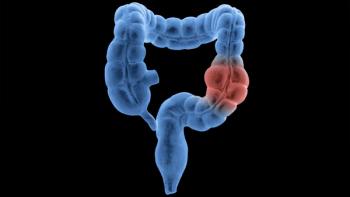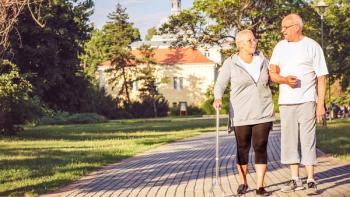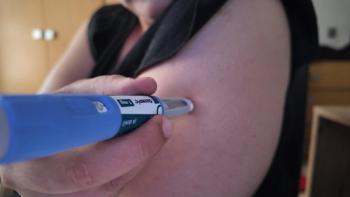
Making the Case for Holistic Therapies in Your Practice to Improve Patient Outcomes
Oncology practitioners and patients are increasingly looking to holistic interventions, such as aromatherapy, healing touch, guided imagery, and massage, to improve patient outcomes.
Oncology practitioners and patients are increasingly looking to holistic interventions, such as aromatherapy, healing touch, guided imagery, and massage, to improve patient outcomes. To fully integrate these methods into daily practice, however, it is important for practitioners to be trained in their safe and appropriate use and to provide their institutions with evidence of their efficacy.
In a podium session May 1 at the 2014 ONS Congress, Marilyn Haas, PhD, ANP-BC, shared insights from her work as a nurse practitioner in Integrative Medicine at the Mission Health System in Asheville, North Carolina, on how these four modalities can be used appropriately in the oncology setting, beginning with aromatherapy using essential oils.
She explained that these oils can be inhaled, administered topically, or ingested, but practitioners at her institution use the inhalation method with patients. The three oils she uses in her practice are lavender, lemon, and peppermint, each providing different benefits for patients. Lavender, for example, has been found useful across a number of quality-of-life domains, including increased energy, stress reduction, and improved sleep, whereas, lemon oil enhances concentration, promotes well-being, and acts as an immune stimulant. In addition to its antiemetic properties, peppermint has shown efficacy as an analgesic and in relieving breast tenderness, Haas added.
Haas stressed the importance of using reputable suppliers, and as with all holistic interventions, nurses should be fully trained in their safe use and understand any toxicity profiles and contraindications.
For example, it is critical to know the correct species of lavender, Haas said, as there are as many as 39, and only some are appropriate for therapeutic use in patients. Lavender has a very low toxicity profile, she added, but if an antidote is required after inhalation, a patient can smell small coffee beans, so these should be readily available if needed.
Moving on to tactile approaches, both healing touch and massage have demonstrated efficacy in patients. Massage, said Haas, has been shown to increase circulation, ease depression, reduce lymphedema, and relieve pain. When using this method in cancer patients, Haas stressed, practitioners should be mindful of any coagulation disorders, low platelet counts, and/or use of medications such as warfarin and heparin.
Finally, guided imagery, said Haas, is useful in strengthening the immune system and reducing stress, among other benefits. This intervention can be self-guided or coached, explained Haas, and typically involves quiet background music and deep breathing.
Haas suggested that for patients with cancer, practitioners employ positive suggestion, such as walking them through a planned procedure, as well as activating all the senses with guiding questions to provide an experience akin to a “vacation in their mind.” She added that ONS offers a helpful resource to assist practitioners wanting to use this modality, Voice Massage: Scripts for Guided Imagery.
“Truly, all four of these modalities are really showing the art of nursing,” said Haas.
Introducing Holistic Modalities in Your Workplace
Lourdes Lorenz, MSN-IH, RN, AHN-BC, NEA-BC, HTPa, director of Integrative Healthcare at Mission Hospital, advises a five-part strategy to secure institutional buy-in on holistic modalities. This includes having a clear vision for the integrative program; deciding which holistic modalities you want to introduce at your institution; ensuring that all practitioners who will be treating patients are well-trained in the modalities; using a collaborative approach that incorporates both existing holistic therapy expertise at your facility and the recruitment of specialists elsewhere; and careful and ongoing documentation that ensures established policies and procedures are followed by all staff and also provides a mechanism for demonstrating program efficacy.
Lorenz, who created and oversees her hospital’s Integrative Health Department, stressed that the latter component is especially important. At her institution, documentation includes providing a resource book, a patient consent form process, material safety data sheets, and ensuring that fully trained staff who are providing the therapies always check pre- and post-vital signs so that evidence of program efficacy can be built.
Another essential point to remember before taking steps to begin a program and identify the holistic approaches that will be part of it is to check state nursing scope of practice requirements. “Every state has a different scope of practice for complementary and alternative modalities,” Lorenz explained.
She added that building a team of experts by tapping into local resources and consulting with national experts on these therapies should not be difficult: “They tend to be very accessible, and it’s amazing how generous they are with their time.”
“In oncology you need to have integrative therapies,” said Lorenz. More and more patients are using them, and oncology nurses—who, she asserted, really are “all holistic nurses because you are very present with your patients”—are especially suited to help.
<<<
Newsletter
Knowledge is power. Don’t miss the most recent breakthroughs in cancer care.





























































































